Section One: The Fundamentals
A) Keywords
Exercise 1:
Provide a brief definition of one of the padlet keywords for this week.
The anti-aging agenda is the idea that aging should be slowed down or reversed. It includes things like skincare products e.g., anti wrinkle cream, medical treatments e.g., botox, and fitness plans that promise to keep people looking or feeling younger. Some scientists even research ways to extend life or stop aging altogether. This idea is common in beauty and health industries, where looking young is often seen as more valuable. However, it can also lead to negative attitudes toward older people, making aging seem like something bad instead of a natural part of life.

|
B) The Social Significance of Aging in Sport
Exercise 2: Notebook Prompt
How is old age popularly represented today? Find an image online that you think exemplifies one defining attitude towards old age and paste in your notebook below with a brief explanation of what this image means to you.

Many young adults fear aging because they don’t want to look older, feel weaker, or experience the aches, pains, and illnesses that can come with it. However, in everyday life, adults often joke about getting older. They might laugh about how going to bed early makes them feel old, complain about aches after sitting too long, or tease younger people for not understanding certain references—while younger people do the same in return. These jokes show that while aging can be scary, people also find ways to accept and laugh about it. This is why I chose to include a meme that exemplifies both – the fear of aging and humour.
|
Exercise 3: Notebook Prompt
What does the article (referencing another study by Dionigi) mean by its statement that sport can help aging people to simultaneously “accept and resist the ageing process” (572)? Respond by audio or text and find paste two images sourced online into your notebook showing how sport might help aging people to both accept and resist the aging process.
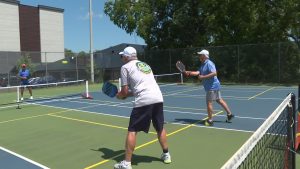 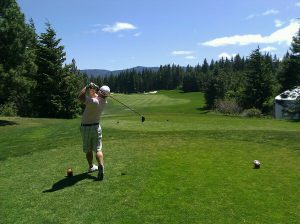
Resist the aging process means to stay physically active, maintaining strength, and proving that they can still compete or perform well.
Accepting the aging process means to acknowledge the natural changes that come with getting older.
Two sports that come to mind when thinking of resisting and accepting the aging process are pickleball and golf. Pickleball is a no contact competitive game that allows individuals to move their body in many different ways and requires you to be quick with your reflexes (resisting aging). However, because players mostly stay in a small area and don’t have to run much, it is also easier on the body (accepting aging). Golf also comes to mind because walking the course instead of using a cart (6-8km for 18 holes) helps players stay physically active (resisting aging), but the game itself is low-impact and does not put too much strain on the body (accepting aging)
Both of these sports allow older adults to stay moving while adjusting to their physical changes, helping them enjoy sports for a longer time.
|
Exercise 4: Notebook Prompt
Who are the groups less likely to have extensive opportunities to take part in sports, according to Pike? How does privilege factor into aging and sport? (200 words max)
According to Elizabeth Pike, certain groups have fewer opportunities to participate in sports, including older adults, people with disabilities, women (especially older women), lower-income individuals, and marginalized ethnic communities. These groups often face barriers such as financial limitations, lack of accessible programs, societal stereotypes, and limited representation in sports.
Privilege plays a key role in aging and sport. Wealthier individuals can afford coaching, equipment, and healthcare, allowing them to stay active longer. Gender privilege means men generally have more sporting opportunities, while older women may be discouraged from participating due to traditional expectations. Able-bodied privilege ensures easier access to mainstream sports, whereas disabled individuals must seek specialized opportunities that are often scarce. Cultural privilege also influences participation—some communities may not value or support sports for older adults.
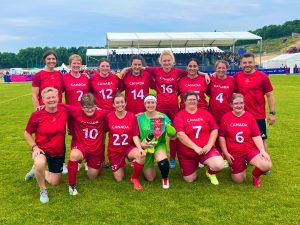
|
Exercise 5: Padlet Discussion
Why do you think age discrimination is “reported more than any form of prejudice” with older people presented as a threat to social values and interests? Feel welcome to use video in your responses. Paste your comments (or transcript of your video) below!
Age discrimination is reported more than other types of prejudice because many societies value youth over old age. Older people are often seen as less productive, weaker, or a burden on healthcare and jobs. Some think aging is something to fight against, which leads to negative views about older adults. Older people are also seen as a threat to social values and interests because they may not fit modern ideas about speed, change, and progress. In workplaces, they might be seen as less capable with new technology. In sports and media, younger bodies are often celebrated, while aging bodies are ignored or criticized.

|
B) Older Women and Sport
Exercise 6: Notebook Prompt
What differences do you see in these ads? Which one is more inclusive? How is age represented or not represented in each? Answer these questions in your notebook.
Exercise 7: Notebook Prompt
In her article, “Assessing the sociology of sport: On age and ability,” Elizabeth Pike references a “trend towards a ‘feminisation of ageing’, with many women living longer than men” (573). Do you agree that aging has been “feminized” in this way? How? Answer these questions in your notebook.
Yes, aging has been “feminized” in some ways because women tend to live longer than men, so there are more older women than older men. This means that when people think about aging, they often picture elderly women. At the same time, society puts more pressure on women to stay youthful. Women are often expected to look young and take care of their appearance, while aging in men is sometimes seen as a sign of wisdom or experience. This can make aging feel different for women, as they may face more criticism for looking older. Because of this, aging is often talked about in ways that focus more on women’s experiences, making it seem like aging is “feminized.”
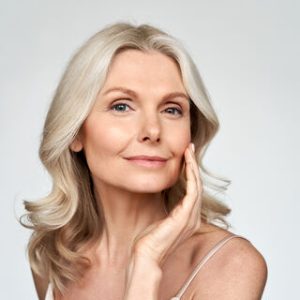
|
Section Three: Module Mini Assignment
“The Great Peterborough Pickleball Debacle” Case Study
Using the Pike article in Section One as a reference, analyze popular depictions/discussions/critiques of pickleball as a “sport trend” that has proved enormously appealing to older segments of the population.
1) Describe the problem as you understand it. Read this
article for background and source two other media /social media pieces.
2) Leaving aside the clear issues with process and priorities, consider how the older pickleball athletes/advocates are represented in the media/social media discussions of the issue. Is ageism a factor in these representations? Where do you see a neoliberal agenda around aging at work in these stories (provide examples and refer back to the Pike article for guidance). Include any images you think may be relevant? (300 words)
Worth: 5%
Due: April 15th along with module work
Pickleball as a Sport Trend Among Older Adults
Pickleball has become one of the fastest-growing sports, particularly among older adults, due to its low-impact nature, social benefits, and accessibility. The sport is often framed as a tool for “successful aging,” aligning with the idea that older individuals should remain active to maintain health and independence (Pike, 2021).
Media and public discussions frequently portray pickleball as a positive trend, emphasizing its role in reducing isolation, improving physical fitness, and promoting intergenerational play (Heo & Ryu, 2024). However, critiques have emerged, particularly regarding space conflicts. Some narratives suggest that older players demand disproportionate resources, contributing to tensions over public space usage (Meisner, 2021). These debates highlight how aging populations are sometimes encouraged to stay active yet criticized when their recreational needs require infrastructure investments.
Neoliberal views on aging also shape these discussions. Pickleball is presented as a way for seniors to take personal responsibility for their health, reinforcing the idea that aging individuals should remain productive and self-sufficient (Pike, 2021). However, this perspective may overlook the needs of less active older adults or those facing mobility challenges.
Overall, while pickleball provides significant benefits, its rapid rise has sparked debates about fairness in public resource allocation and how aging populations are represented in discussions on sport and recreation.
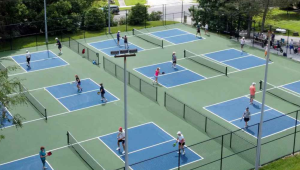
Extra Credit: The Great Peterborough Pickleball Debacle
The Peterborough pickleball controversy arose when the city proposed replacing green space with 16 pickleball courts and a parking lot (Anselmi, 2024). Opponents argued that the project prioritized older adults at the expense of environmental preservation and broader community interests. Others supported the courts, citing the sport’s benefits for senior health and well-being.
Ageism is a factor in this debate. Some critics framed older pickleball players as entitled or unwilling to share public space, reinforcing stereotypes of aging populations as inflexible or demanding (Meisner, 2021). Social media discussions included dismissive comments suggesting that seniors should “go play elsewhere,” highlighting intergenerational tensions. At the same time, the controversy illustrates the double standard in aging discourse—older adults are encouraged to stay active, but when they do, their visibility can be met with resistance (Pike, 2021).
The neoliberal framing of aging is also evident. Pickleball is promoted as a way to keep seniors healthy and reduce healthcare burdens, aligning with policies that emphasize individual responsibility for aging well (Heo & Ryu, 2024). However, this focus on “successful aging” can marginalize seniors who are less active or have different recreational preferences.
Ultimately, the Peterborough debate reflects broader issues of age, space, and equity. While investing in senior recreation is important, it should be balanced with environmental and intergenerational concerns to ensure fair and inclusive urban planning.
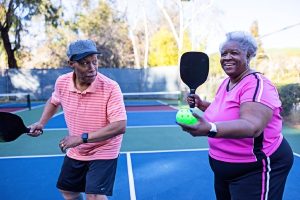
|










